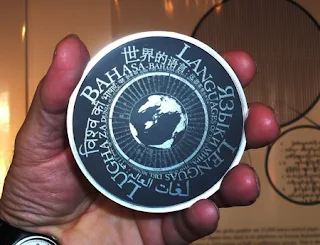Rosetta Disk
Rosetta Disk have a new high density analog storage device as an alternative to the quick obsolescence and fast material decay rate of typical digital storage systems. This technology, developed by Los Alamos Laboratories and Norsam Technologies, can be thought of as a kind of next generation microfiche. However, as an analog storage system, it is far superior. A 2.8 inch diameter nickel disk can be etched at densities of 200,000 page images per disk, and the result is immune to water damage, able to withstand high temperatures, and unaffected by electromagnetic radiation. This makes it an ideal backup for a long-term text image archive. Also, since the encoding is a physical image (no 1's or 0's), there is no platform or format dependency, guaranteeing readability despite changes in digital operating systems, applications, and compression algorithms.

